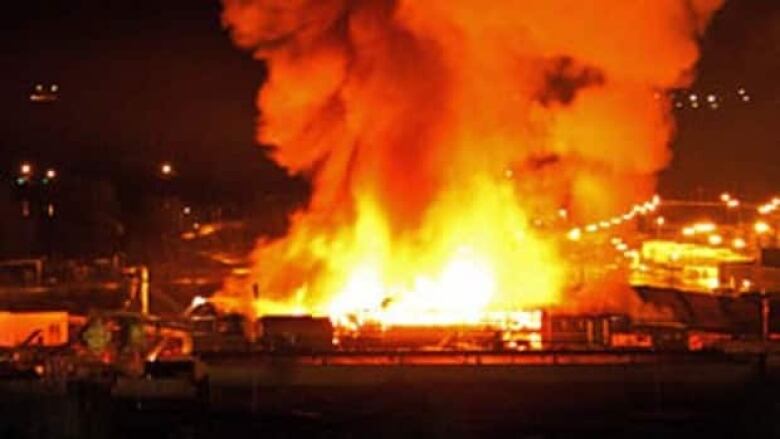Beetle-kill and green wood dust explosive: WorkSafeBC

Dust from green wood, as well as pine beetle wood, could have contributed to two fatal explosions at the Burns Lake and Prince George sawmills earlier this year, according to a scientific analysis commissioned by WorkSafeBC.
WorkSafeBC said thattests results from samples sent toa U.S. laboratoryshow that both types of wood dust pose a high risk of explosion under very dry conditions.
The tests were done following speculation that beetle-kill wood dust was a potential fuel source in one or both of the the explosions.
Four people died when theBabine Forest Products sawmillin Burns Lake, B.C., and amill in Prince George burned downearlier this year.
A statement issued by WorkSafeBC Thursday stated that the information about wood dust explosion risks was being shared only as a matter of "general concern and advice to industry."
Roberta Ellis, a senior vice president with WorkSafeBC, said employers at all sawmillsneed to bewell-aware of the risks in letting either type of dust accumulate.
"It's important that operators who are processing green wood not feel complacent that beetle-kill wood is the problem," she said.
Investigations underway
The statement said the lab results do not reflect conclusions in the two ongoing investigations.
WorkSafeBC investigations director Jeff Dolan saidresearch is being done into a number of causes of the fires.
"We still have one or two other fuel sources that we need to rule out beyond a reasonable doubt," Dolan said.
He said those fuels could include natural gas, propane and other gas sources.
A final report is expected this fall.
Rebuild decision
The company that owns and runs the Burns Lake millHampton Affiliates said it will make a final decision in 30 days on whether it plans to rebuild the Babine Forest Products sawmill, which burned to the ground in January.
The company said it wants a secure supply of timber before it considers rebuilding.
Yesterday, the Special Committee on Timber Supplyreleased its reportsaying the fibre supply or the number of trees is more than they expected.
"There will be a sustainable cut in the [Burns Lake] Timber Supply Area of just over a million cubic metres per year, which is more than double what the expectation is currently," said committee chair John Rustad.
Rustad also pointed to other options, such as logging areas infested by the mountain pine beetle.
Corrections
- An earlier version of this story said that two types of wood dust were linked to the explosions at two B.C. sawmills. In fact, a lab analysis of two types of wood dust concluded that they both pose a high risk of explosion under certain conditions. WorkSafeBC has not determined whether those conditions existed at the two sawmills at the time of their fires, or whether wood dust was responsible for ignition of the fires at those sawmills. WorkSafeBC is still investigating the causes of the explosions.Aug 17, 2012 5:18 AM PT
With files from the CBCs Wil Fundal












_(720p).jpg)


 OFFICIAL HD MUSIC VIDEO.jpg)
.jpg)



























































































